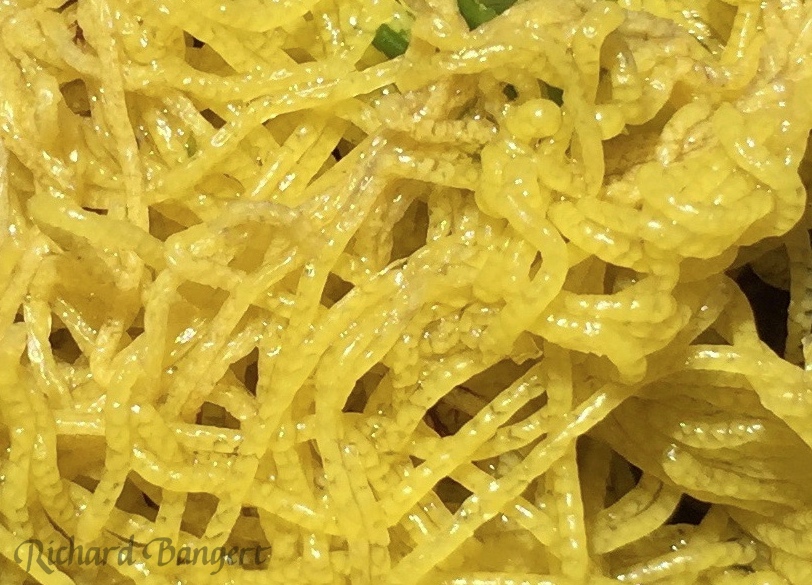Conservation of wildlife isn’t just important at Crab Cove
Visitors flock to Crab Cove, a State Marine Conservation Area, to learn about and experience the Bay’s sea dwellers. The educational lessons at the Crab Cove Visitor Center are equally relevant throughout the waterway south of the USS Hornet at Alameda Point where even more creatures thrive in relative obscurity.
The area encompasses an interconnected web of vegetation, birds, seals, fish, mollusks, crustaceans and worms. Ghost shrimp, bat rays, leopard sharks, striped crabs, mussels, California sea hares and fish with light-emitting diodes are just a sampling. A 36-foot-wide rock wall, known as a breakwater and built by the Navy in 1945, forms the mile-long southern boundary.

Ghost shrimp are seldom seen, since they spend most of their lives in tunnels constantly digging and filtering the sandy mud for nutrients. But the evidence of their presence is plain to see during low tide at the mudflat west of the Encinal Boat Ramp. Thousands of small mud mounds dotting the landscape have an opening in the center leading down into the shrimp burrow.

The shrimps’ perpetual mining and aeration of the mud makes the environment attractive to other species as well, such as the arrow goby. These tiny fish are only a few inches long and almost completely transparent. They share the burrows with the shrimp. At low tide they can be seen darting around in shallow pools of water in the sand. Occasionally least terns dive to grab a goby.

 A neighbor of the shrimp and gobies is the lugworm or sandworm. They, too, are seldom seen, but at low tide their ropey casings of excavated sand and mud are a clear sign of their presence. Another sign of their presence in recent weeks are the almost clear egg sacs. At low tide they look like deflated balloons that washed ashore. But when submersed in water, it becomes apparent that the egg sacs are tethered to the worms’ tunnels. The jelly sac keeps the eggs moist at low tide.
A neighbor of the shrimp and gobies is the lugworm or sandworm. They, too, are seldom seen, but at low tide their ropey casings of excavated sand and mud are a clear sign of their presence. Another sign of their presence in recent weeks are the almost clear egg sacs. At low tide they look like deflated balloons that washed ashore. But when submersed in water, it becomes apparent that the egg sacs are tethered to the worms’ tunnels. The jelly sac keeps the eggs moist at low tide.

Another seldom seen creature is the foot-long California sea hare or sea slug. Their brownish color and slow movement makes them difficult to spot, even when they venture among the rocks near the water surface. During egg-laying season, a clue to their presence is the large bright yellow clumps of eggs deposited on the rocks, which look like angel hair pasta.

Sea vegetation serves as an anchor for herring eggs. Some eggs are churned up by tides and currents during the prolific herring-spawning season and eaten by birds.

Algae and vegetation on rocks in the tidal zone serve as food for striped crabs, always busy picking away. But crabs will quickly move under a rock if they spot a visitor with one of their eyes that can be raised up out of the socket.

Armies of kelp flies walk – not fly – along the waterline on the beach during warm weather waiting for kelp to wash up so they can lay eggs.

Small fish, such as the jack smelt, provide food for the diving California least terns. Just about any size fish is prey for the California brown pelicans that hang out by the thousands on the section of breakwater surrounded by water known as Breakwater Island. Fellow marine birds the double-crested cormorants dive deep, chasing down prey by paddling their webbed feet. Mussels are a delicacy for gulls, which can often be seen hovering and dropping mussels on rocks and pavement to crack open the shell.

The strangest fish to appear in the channel is the plainfin midshipman. It can create its own light in the deep waters it inhabits during most of the year. Their skin is laced with hundreds of bioluminescent photophores that can help it attract prey, as well as emitting light that matches surrounding water to make it difficult for predators to see.

The leopard shark with its large leopard-like brown markings can grow to seven feet in length but is harmless to humans. These fish forage for food in the shallow intertidal zone going after crabs, shrimp, worms, other fish and fish eggs.

A gracefully beautiful fish and a regular at Alameda Point is the bat ray, which feeds along the bottom but can occasionally be seen swimming just below the surface.

A moon jellyfish was recently spotted in Alameda Point waters, drifting along near the surface.

Harbor seals, representing marine mammals, round out the marine life roster. Alameda Point hosts the only harbor seal haul-out in the East Bay between Yerba Buena Island and Fremont.

Originally published in the Alameda Sun.
More photos of Alameda Point marine life, with map












THANK YOU for all these wonderful images and this detailed information!
LikeLike